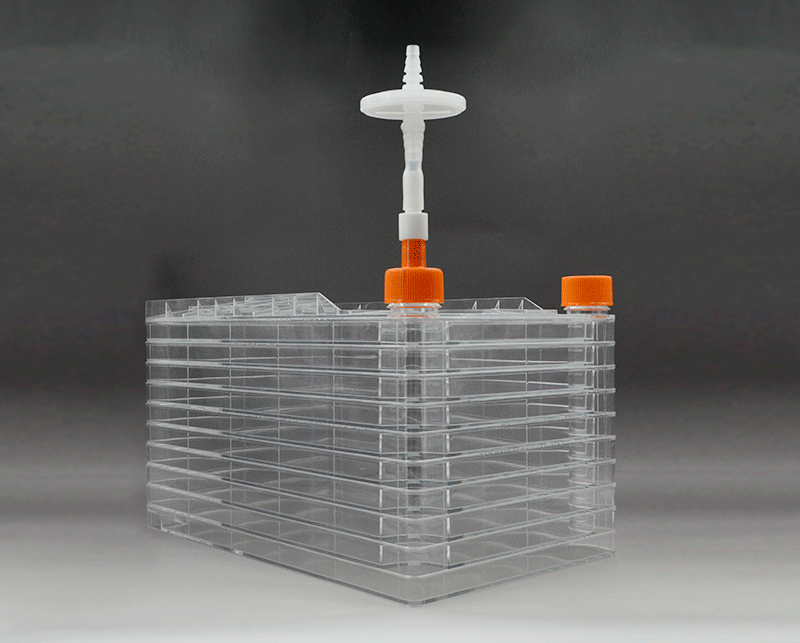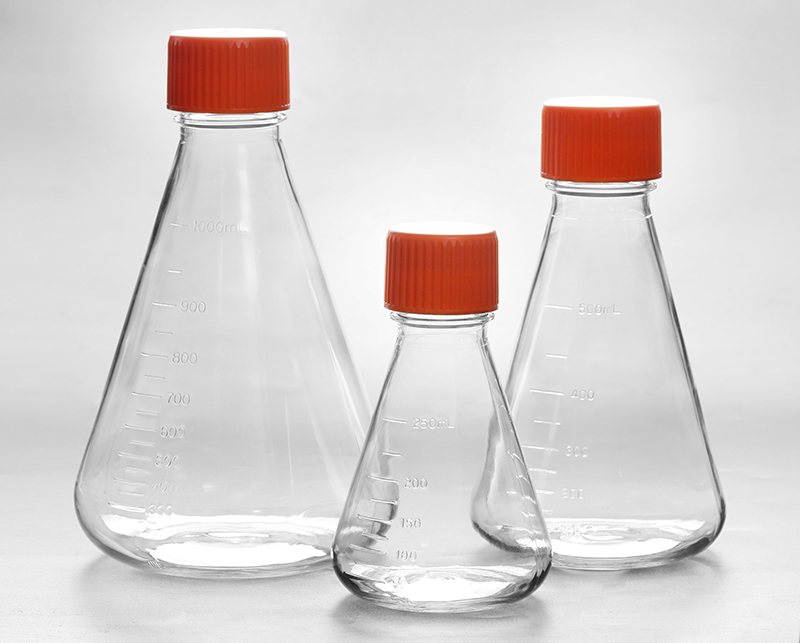Metabolic Rewiring Is Essential for AML Cell Survival to Overcome Autophagy Inhibition by Loss of ATG3
代谢重新布线对于 AML 细胞存活以克服 ATG3 缺失导致的自噬抑制至关重要
The importance of autophagy in leukemia progression and survival has been studied previously. However, little is known about the development of resistance mechanisms to autophagy inhibition in leukemia. Here, we present data on the mechanisms by which leukemia cells maintain their cell survival after inhibition of autophagy by the loss of ATG3. After the loss of ATG3, leukemia cells upregulated their energy metabolism by increasing glycolysis and mitochondrial metabolism, in particular oxidative phosphorylation, which resulted in higher ATP levels. Moreover, inhibition of mitochondrial function strongly impaired cell survival in ATG3 deficiency, thus demonstrating the importance of ATG3 in the regulation of metabolism and survival of leukemic cells. Therefore, our data provide a rationale for combining autophagy inhibitors with inhibitors targeting mitochondrial metabolism for the development of leukemia therapy to overcome the potential obstacle of emerging resistance to autophagy inhibition.
先前已经研究了自噬在白血病进展和存活中的重要性。然而,对于白血病中自噬抑制的抗性机制的发展知之甚少。在这里,我们提供了白血病细胞在 ATG3 缺失抑制自噬后维持细胞存活的机制的数据。在失去 ATG3 后,白血病细胞通过增加糖酵解和线粒体代谢,特别是氧化磷酸化,上调其能量代谢,从而导致更高的 ATP 水平。此外,线粒体功能的抑制会严重损害 ATG3 缺乏症的细胞存活,从而证明 ATG3 在调节白血病细胞代谢和存活中的重要性。

Acute myeloid leukemia (AML) develops from malignant clonal expansion of undifferentiated myeloid progenitors, causing bone marrow failure. Despite advances in the treatment of AML, prognosis remains poor for most patients. Consequently, there is an unmet medical need to find novel therapeutic approaches targeting AML onset and progression.
Several studies have underlined the pivotal role of autophagy in the development and progression of AML [1,2]. Autophagy is a well-known regulator of cellular metabolism contributing to homeostasis and cell survival [3]. The self-degradative property of cytosolic macromolecules is central to autophagy thereby serving as a nutrient source for building blocks during limited energy supply [4]. Proliferating cancer cells are exposed to permanent nutrient deprivation and maintain high energy levels by rewiring metabolic pathways [5,6]. In particular, AML cells are highly dependent on mitochondrial metabolism, as we and others have demonstrated the fundamental role of mitophagy in maintaining mitochondrial integrity in AML [7,8,9]. Therefore, numerous studies have presented the promising approach of targeting autophagy together with different chemotherapies for cancer therapy [10]. However, inherent and acquired resistance to autophagy inhibition has been reported in clinical trials, resulting in further tumor progression after initial response [11]. Importantly, autophagy-related proteins (ATG) including ATG5 and ATG7, which are well known critical autophagy genes, have been reported to promote cell proliferation in leukemia [12,13]. Furthermore, the core autophagy gene ATG3, which directly participates in autophagosome formation by conjugating phosphatidyl-ethanolamine with LC3 [14,15,16], was shown to be essential for leukemogenesis [17].
Despite the vast number of studies exploring autophagy, the mechanisms involved in overcoming autophagy inhibition are poorly understood. In this study, we identified ATG3 as a key player for survival of leukemia cells and present conclusive evidence supporting that upon loss of ATG3 AML cells rewire their central carbon metabolism to evade survival disruption upon autophagy inhibition. Firstly, we performed a CRISPR/Cas9 screen using an autophagy library to identify genes essential for AML proliferation. We found ATG3 to be important for AML cell proliferation and essential for autophagy. By analyzing the effect of ATG3 deficiency in AML cell lines, we found increased levels of mitochondrial reactive oxygen species and upregulated oxidative phosphorylation. By utilizing uniformly labeled 13C-glucose nuclear magnetic resonance (NMR) analysis, we observed increased glycolysis and enhanced activity of mitochondrial metabolism upon ATG3 loss. Furthermore, ATG3 deficiency sensitized AML cells to inhibition of mitochondrial respiration. These results suggest a combination of inhibitors targeting autophagy and mitochondrial metabolism as promising approach to treat AML.

急性髓性白血病 (AML) 由未分化的髓系祖细胞的恶性克隆扩增发展而来,导致骨髓衰竭。尽管 AML 的治疗取得了进展,但大多数患者的预后仍然很差。因此,寻找针对 AML 发病和进展的新治疗方法的医疗需求尚未得到满足。
一些研究强调了自噬在 AML 的发展和进展中的关键作用 [ 1 , 2 ]。自噬是众所周知的细胞代谢调节剂,有助于体内平衡和细胞存活 [ 3 ]。细胞溶质大分子的自降解特性是自噬的核心,因此在有限的能量供应期间可作为构建模块的营养来源 [ 4 ]。增殖的癌细胞暴露在永久的营养缺乏中,并通过重新连接代谢途径来维持高能量水平 [ 5 , 6]。特别是,AML 细胞高度依赖线粒体代谢,因为我们和其他人已经证明了线粒体自噬在维持 AML 中线粒体完整性方面的基本作用 [ 7 , 8 , 9 ]。因此,许多研究提出了一种有前景的靶向自噬的方法以及用于癌症治疗的不同化学疗法[ 10 ]。然而,在临床试验中报告了对自噬抑制的固有和获得性抗性,导致初始反应后肿瘤进一步进展 [ 11 ]。重要的是,据报道,自噬相关蛋白 (ATG) 包括 ATG5 和 ATG7,它们是众所周知的关键自噬基因,可促进白血病细胞增殖。12、13 ]。_ 此外,通过将磷脂酰乙醇胺与 LC3 结合直接参与自噬体形成的核心自噬基因 ATG3 [ 14 , 15 , 16 ],被证明对白血病发生至关重要 [ 17 ]。
尽管有大量研究探索自噬,但对克服自噬抑制的机制知之甚少。在这项研究中,我们将 ATG3 确定为白血病细胞存活的关键因素,并提供确凿的证据支持在 ATG3 丧失后,AML 细胞重新连接其中心碳代谢,以逃避自噬抑制后的存活中断。首先,我们使用自噬文库进行了 CRISPR/Cas9 筛选,以鉴定 AML 增殖所必需的基因。我们发现 ATG3 对 AML 细胞增殖很重要,对自噬至关重要。通过分析 ATG3 缺乏对 AML 细胞系的影响,我们发现线粒体活性氧物质水平升高和氧化磷酸化上调。通过使用统一标记的13C-葡萄糖核磁共振 (NMR) 分析,我们观察到 ATG3 损失后糖酵解增加和线粒体代谢活性增强。此外,ATG3 缺乏使 AML 细胞对线粒体呼吸的抑制敏感。这些结果表明,靶向自噬和线粒体代谢的抑制剂组合是治疗 AML 的有希望的方法。

In our study, we identified ATG3 as a core autophagy gene essential for AML cell survival by performing a CRISPR/Cas9 proliferation screen targeting 192 autophagy-related genes. By genetically depleting ATG3 in human leukemia cell lines, we demonstrate that AML cells rewire their energy metabolism to sustain cell survival when autophagy is impaired. NMR analysis revealed upregulation of glycolysis and OXPHOS upon ATG3 deficiency, which was accompanied by increased mitochondrial ROS and ATP production. Importantly, while ATG3-deficient cells are resistant to inhibition of glycolysis, we show that inhibition of OXPHOS severely reduces AML cell survival, identifying their dependence on mitochondrial metabolism as arising vulnerability upon autophagy inhibition (Figure 6).Taken together, our findings indicate the importance of ATG3 in the regulation of metabolism and survival of AML cells, as inhibition of mitochondrial oxidative phosphorylation severely impaired cell survival upon loss of ATG3. Moreover, targeting both autophagy and mitochondrial oxidative phosphorylation might be a potential therapeutic strategy for AML.
在我们的研究中,我们通过针对 192 个自噬相关基因进行 CRISPR/Cas9 增殖筛选,将 ATG3 鉴定为对 AML 细胞存活至关重要的核心自噬基因。通过基因消耗人类白血病细胞系中的 ATG3,我们证明 AML 细胞重新连接其能量代谢以在自噬受损时维持细胞存活。NMR分析显示ATG3缺乏时糖酵解和OXPHOS的上调,伴随着线粒体ROS和ATP产生的增加。重要的是,虽然 ATG3 缺陷细胞对糖酵解的抑制具有抗性,但我们表明 OXPHOS 的抑制会严重降低 AML 细胞的存活率,从而确定它们对线粒体代谢的依赖性是自噬抑制后出现的脆弱性(图 6)。总之,我们的研究结果表明 ATG3 在调节 AML 细胞的代谢和存活中的重要性,因为抑制线粒体氧化磷酸化会在 ATG3 缺失后严重损害细胞存活。此外,靶向自噬和线粒体氧化磷酸化可能是 AML 的潜在治疗策略。
关键词: 自噬,ATG3,自噬抑制,急性髓性白血病,代谢重新布线,autophagy,ATG3, autophagy inhibition,acute myeloid leukemia,metabolic rewiring
来源:MDPI https://www.mdpi.com/2072-6694/13/23/6142/htm

上一篇: PETG血清瓶可用于平衡盐溶液的储存
下一篇: 如何去除细胞摇瓶悬液中的死细胞